A guide to the most famous parks in Rome.
While there is no end to amazing museums and archaeological sites in Rome, it is also refreshing to visit the city's parks, which offer vast expanses of greenery and have more than their fair share of history and culture too.
Here is a short guide to help you explore the parks of Rome.
Villa Ada
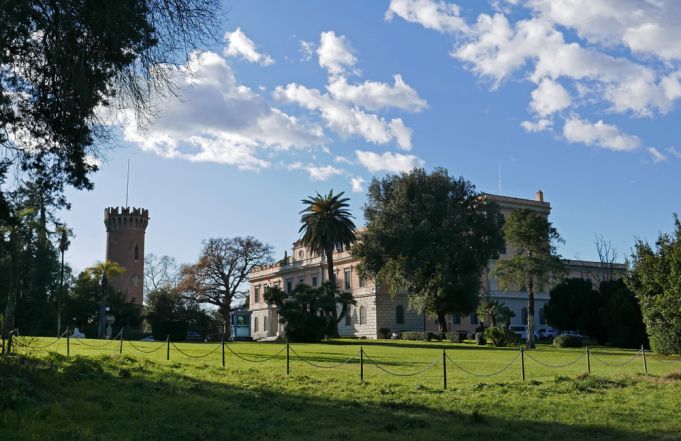
This park was originally the home of King Victor Emmanuel III during the first half of the 20th century. It now houses the Egyptian embassy and consulate. The park is also a training ground for athletes, a concert stage for music-lovers, and a haven for locals from all that is hectic. The park hosts the long-running Incontra il Mondo festival of world music each summer. Its landscape is partly wooded and there is a lake with canoeing. In addition, the park’s 67m-high Monte Antenne gives hikers a panoramic view as well as access to an archaeological site which uncovered the ruins of an 1870 fort. Area: Salario. Ph: marcovarro / Shutterstock.com
Also read: A brief history of Villa Ada
Parco degli Acquedotti
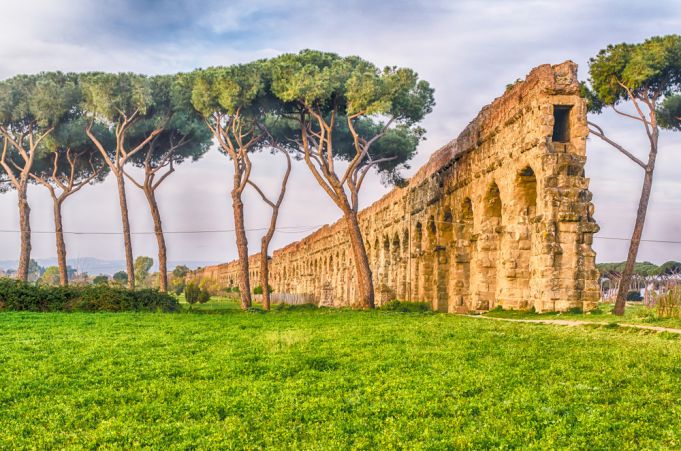
This 240-hectare green space, tucked in the Appia Antica regional park, is known for possessing over half of the 11 major ancient Roman aqueducts and it takes around two hours to walk the whole network.
Also read: Things to do with kids in Rome
The park's Villa Vignacce was built between the second and fourth centuries AD most likely by the brick-maker Q. Servilius Pudens. You can even see Pudens’ stamp on some of the bricks, a rarity as buildings were usually constructed so the stamps were not visible. Another architectural highlight is the Casale di Roma Vecchia, a house-tower that was likely used as part of a coaching inn during the 13th century. There is also the burial chamber of the “tomb of a hundred steps” along with some of Via Latina’s paving stones. Area: Appia Antica.
Parco dell'Appia Antica
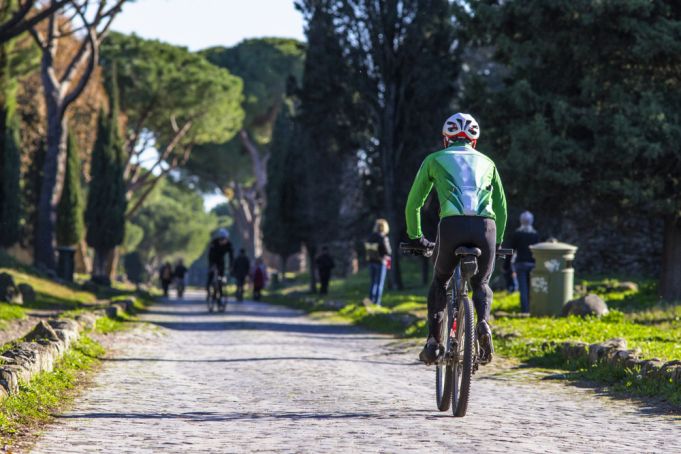
This wedge-shaped piece of land stretches over an impressive 3,400 hectares, and encompasses the rural estates Tormarancia and Farnesiana, Tor Fiscale’s green area, the Caffarella valley and 16 km of the ancient consular road, as well as various natural and man-made attractions. Its location adjacent to the Alban Hills makes it a biological hub and a favourite place for nature lovers.
Also read: Appia Antica - Suburban Oasis
The park is closed to private traffic but can be explored by taking numerous bicycle and walking tours. In additon to the Caffarella valley, the principal sites include the Porta S. Sebastiano, Cecilia Metella, Circo di Massenzio, and a ride up Via Appia Antica. Other places of interest are the Museo delle Mura, the church of S. Urbano, the Basilica of St Sebastian and its catacombs, the St Callixtus catacombs, the Circus and Villa of Maxentius, the Mausoleum of Romulus, the Caetani Castle, and the Villa Quintili and aqueduct. Area: Appia Antica.
Villa Borghese
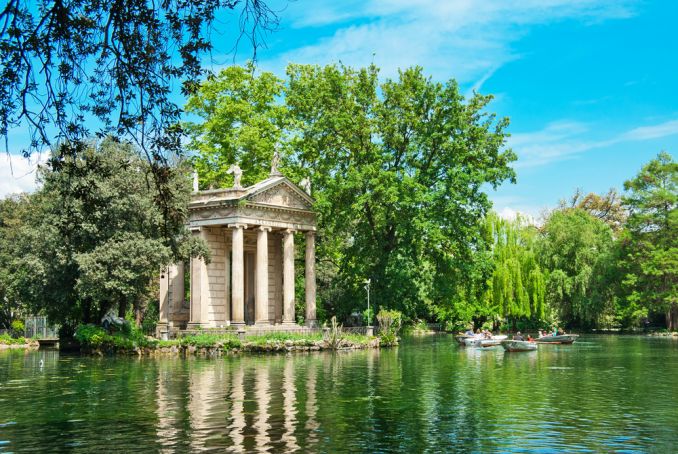
Founded on 85 hectares and five centuries of history, Villa Borghese stretches from Via Veneto to the heart of Parioli. It began as a 16th-century vineyard until Pope Paul V’s nephew, Cardinal Scipione Borghese, made it a private park.
The Borghese family handed over ownership of the park to the city in 1903. The Pincian hill, or Pincio, is located on the edge of Piazza del Popolo, and offers stunning views of the capital. Pincio's gardens and staircases were laid out in 1809-14 according to designs by Giuseppe Valadier. Bikes and rickshaws can be rented throughout the park which contains the city's zoo, known as the Bioparco. It also plays host to one of the biggest equestrian events in Rome each May at the Piazza di Siena.
Also read: Visiting the Vatican Museums in Rome
The park is best known for housing the Galleria Borghese, home to one of the world's finest art collections with sculptures by Bernini and Canova, and paintings by Caravaggio, Correggio, Raphael and Titian. There is also another museum in the park's orangery: the Museo Carlo Bilotti, Aranciera di Villa Borghese, whose collection includes 18 works by de Chirico.
Also read: How to buy a ticket for the Borghese Gallery
The park contains a recreation of Shakespeare’s Globe Theatre which stages an annual Shakespeare festival; the state-of-the-art Casa del Cinema which screens Italian classics and holds foreign film festivals; and the world’s smallest cinema, the Cinema dei Piccoli. There is also a small artificial lake, known as the laghetto, where visitors can go boating. Area: centre.
Villa Celimontana
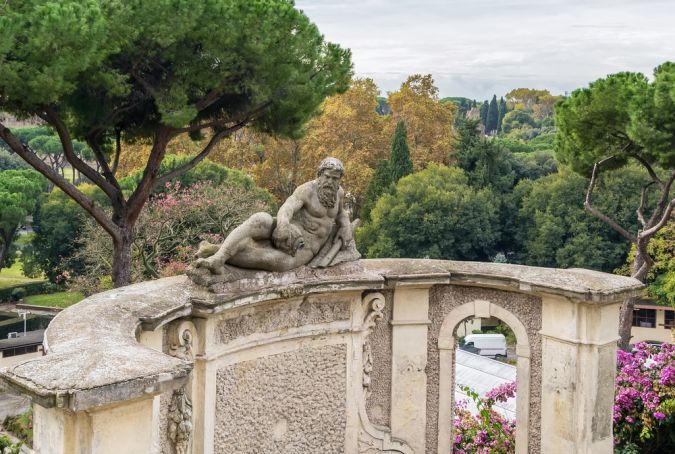
This 110,00-sqm park is situated between the Colosseum and the Baths of Caracalla. In 1553 the Mattei family purchased the land, to construct a villa, and subsequently created the beautiful garden, decorated with exotic plants, bas-reliefs and rich historical artistry. Designed by Michelangelo’s student, Giacomo del Duca, the villa boasts 16th-century fountains, a neo-gothic temple and an obelisk dedicated to Egyptian pharaoh Rameses II, which is rumoured to hold the ashes of Emperor Augustus. Confiscated by the Italian government during world war one, the property is now the home of the Italian Geographical Society and is open to the public. The park can be entered from either Piazza SS. Giovanni e Paolo or from Piazza della Navicella. Area: Celio.
Villa Glori
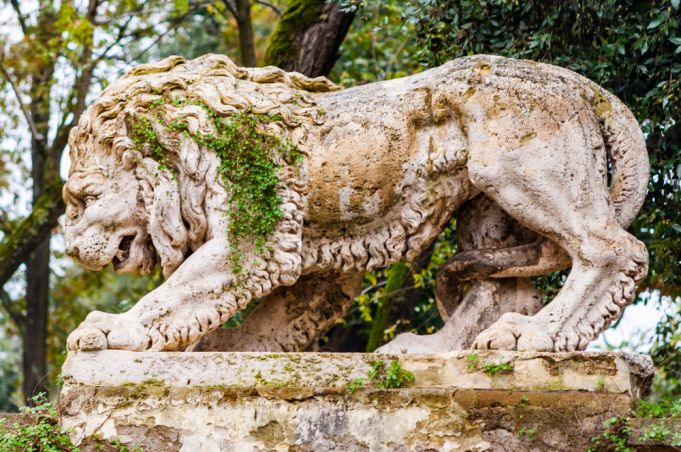
Villa Glori sits on a hill between the districts of Parioli and Flaminio and looks down over the Auditorium Parco della Musica. The park is dedicated as a memorial for all Romans who have given up their lives for Italy. In 1867, a battle took place in Vincenzo Glori’s vineyard, where the Cairoli brothers led 70 fighters against the papal troops. The pope’s forces defeated the rebel group and the scattered survivors fled to join Garibaldi’s army. In 1923 Rome decided to make the park a memorial park to all the victims of world war one, later re-dedicating the park to all Romans who died for their country. Area: Parioli.
Villa Pamphilj
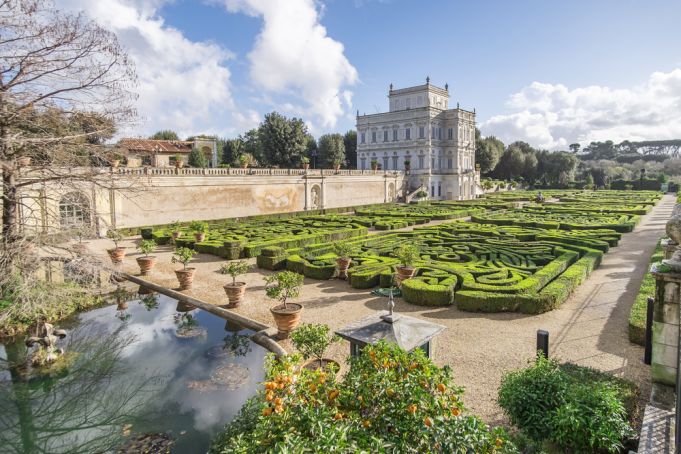
Comprising 184 hectres, this is Rome's largest landscaped public park. Located in the Monteverde district, the park is divided in two by Via Leone XIII, with numerous entrances on the surrounding roads. One of the best-preserved villas, the Villa Pamphilj house was recently restored for government receptions.
Also read: Bramante guide to Rome
Purchased by Pamfilio Pamphilj in 1630, the estate was later developed by Pope Innocent X who commissioned the architects Algardi and Grimaldi to design a larger villa, which was completed in 1647. The Italian state purchased part of the land in 1957 and, after numerous additional acquisitions, opened the park to the public in 1972. There is the Casino del Bel Respiro, which hosts international meetings and state receptions; the Garden Theatre, designed for outdoor performances; and the Villino Corsini, which is the seat of the Casa dei Teatri. You can also see the Aqua Traiana aqueduct which now supplies the many fountains in the park, the Fontanone on the Gianicolo as well as fountains in Trastevere. The Vivi Bistrot cafè and restaurant is located in the heart of the park and there are numerous walking trails and bike paths. Area: Monteverde. Ph: sandrixroma / Shutterstock.com
Villa Sicarra
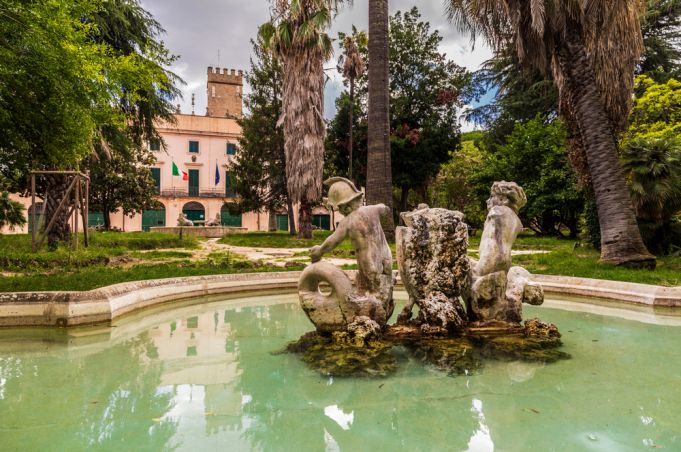
Villa Sciarra is located on the slopes of the Janiculum. The villa changed hands many times, and was given its current title when it was acquired by the Colonna di Sciarra family in 1811. It was severely damaged during the 1849 fighting between Garibaldi and the papal forces at Porta S. Pancrazio nearby. In 1902 a wealthy American couple, George Wurts and Henriette Tower, reassembled and restored the estate and renovated rthe house in the neo-renaissance style.
Also read: Rome's most romantic places
After Wurts’ death, Tower donated the villa to the Italian state as a public park in 1932. The 70,000 sqm-estate, which hosts the Italian Institute of Germanic Studies, features exotic examples of topiary shaped to resemble animals and a garden representing the months of the year. One of Rome's smaller and lesser-known parks, the villa can be accessed at Via Dandolo 47. Area: Monteverde.

















